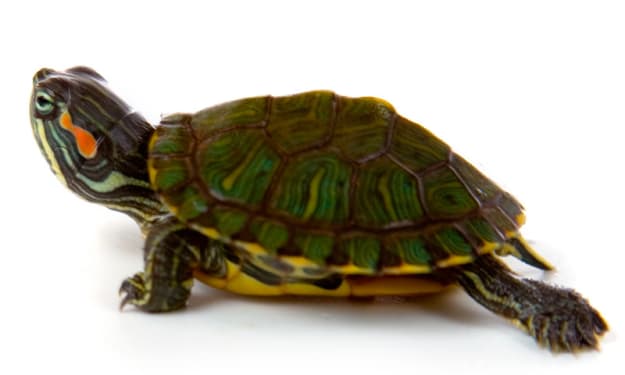
The shoe-billed stork is a descendant of the small-sized dinosaur "Theropoda" - the same group of dinosaurs as T-Rex. Through evolution, the mouth full of sharp teeth was replaced by a beak.
Adult shoe-billed storks are 1.2 m tall and can weigh up to 4-7 kg. Their wings are very large and wide, with a wingspan of 230–260 cm. However, they cannot fly far and too high because their body weight does not allow it.
This bird has long legs and is the ideal model for many beauty lovers. Such a large body with long, thin legs looks a bit "limp", but it creates its own charm.
The shoe-billed stork's most notable feature is its impressively large beak, which is spotted and about 0.12 m wide. The shoebill stork's beak is the widest in the bird world with many uses, especially hunting and scooping up drinks under the harsh African sun.
The front of the wide and sturdy beak is curved into a hook shape. The beak with this special structure is very sharp, can pierce crocodile skin, even the edge of the bird's beak is as sharp as a razor, easily cutting the flesh of its prey.
The Dutch also call the shoebill "father of shoes". It's not that this bird invented shoes, or can make shoes, but because their beaks are very similar to the wooden shoes of the Dutch.
Shoe-billed storks are solitary animals with a lifespan of more than 35 years. You only see this bird appear occasionally when they are in the breeding season in dry weather.
Having successfully hunted, the shoe-billed stork looks for a quiet place to enjoy its feast.
The process of eating baby crocodiles is quite difficult, because they often swim into water with lots of grass. With a thick and wide beak, the shoe-billed stork often grabs baby crocodiles and moss. It will take more than ten minutes to remove all the water grass fibers, but it is not a problem because this bird is very patient.
Crocodile skin is very thick, normal birds cannot eat it. However, the shoe-billed stork is not an ordinary bird, it possesses an extremely powerful beak.
To the shoebill stork, crocodile skin is just a tough piece of quiche, with just a bit of force it will tear. Not only that, they also love to eat turtles and their sturdy shells are nothing with their large beaks and special digestive systems.
Due to many different reasons, the number of shoe-billed storks is no longer large, the total number does not exceed 20,000 in the wild and in captive zoo environments, and has become an alarmingly endangered species.
Nature has a complete biological chain. Each animal has its own survival skills. Like the shoe-billed stork, although it has a large body and cannot fly too far, it is actually a natural enemy of crocodiles.
However, the biggest natural enemy of animals is humans. We are partly responsible for the sharp decline in the number of shoebill storks. Accordingly, people should protect animals and live in harmony with nature. In recent years, surely all of us have felt that Mother Nature is angry. Act now before the earth cannot be saved.






Comments (1)
Loved it! keep up the good work!